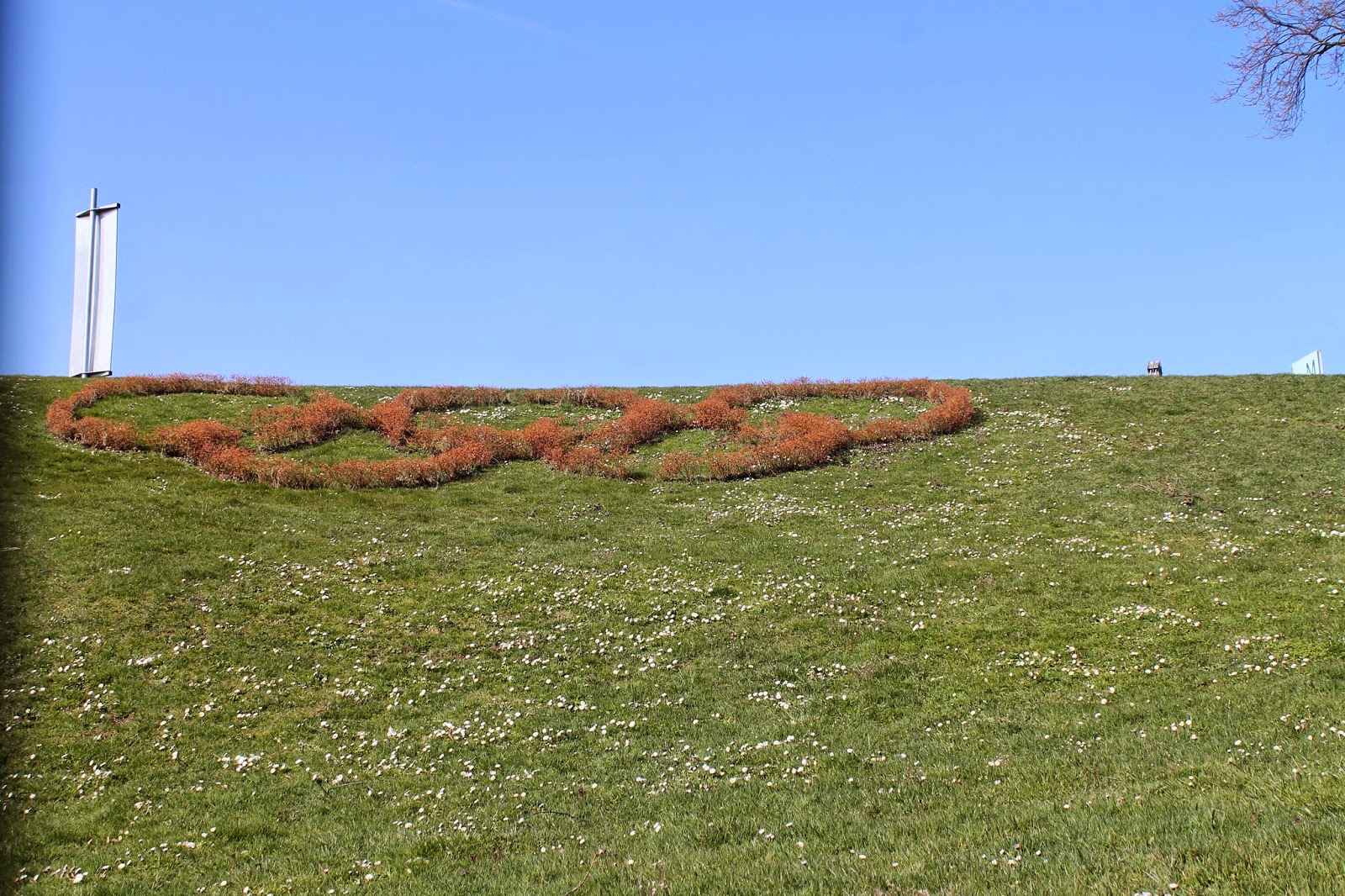Two weeks of
Spring break had ended, and then came the Turks.
This was the
second part of the exchange partnership my school has with a school in Izmir.
In addition to a cultural exchange, we engage in a week long project having to
do with the environment. When we traveled to Turkey, we learned about wind
farms. When the Turks came to us, we learned about swamps and marshes. We don’t
simply learn about things and then do nothing with that information. We conduct
surveys, write reports, take photos, and write blogs that will then get published
in the local newspaper.
 |
| Our page in the newspaper from when we visited Turkey. I'm in the red hat in the top photo and also in the group photo. |
One of our activities
included visiting a swampland. There we learned about the vegetation,
determining the health of the swamp, and how everything functions within the
ecosystem. To get us prepared for visiting the swampland, someone came in and
gave us a presentation with a general overview so that we would have an idea of
what to expect to learn about at the swamp.
During the week,
we also had a few hours to work on our assignments.
Because school
is not my most important priority here, I missed practically the whole week of
school and spent it with the Turks. I went to pick them up and take them back
to the airport (not alone obviously). I gave them a tour of our school and our
city. I joined them on the excursions to berlin and Potsdam. We visited a
couple museums. It wasn’t strange being with them for the majority of the time
because I already knew them, and I get along very well with them. I felt like I
was gone the entire week. I left for school at 6:50 as usual and didn’t arrive
home until 7-8 each night. It was exhausting, but worth every moment.
On Saturday, the
majority of the German-Turk pairs went to Berlin to see a famous sight and get
some culture (East Side Gallery), and do something they all desperately wanted
to do: shopping (Mall of Berlin).
The biggest
shock for the Turks while visiting Germany and our region was all the open
land. Most of the German students live in a house in a village, whereas most of
the Turkish students live in a flat in Izmir. For example, there are cows
nearby from where a student in our group lives. She told us that her exchange
student was so shocked (in a good way) because so much open space and farm
animals simply aren’t there in Izmir. What we see as boring, open fields on our
way to school, the Turks saw as beautiful green space.
 |
| Brandenburger Tor with two of my German friends. |
 |
| Some more Germans and myself |
 |
| my Turkish host sister |
On the last
night, we had an “End of the Week Cultural Celebration.” We had a potluck at
our school, watched a slide show of all the photos from the week, and both groups
sang typical songs and put on a short, little show. It was hilarious mostly
because everything was put together at the last minute and approximately three
people knew what was going on at any given time. While we were setting up the
food, though, the Turks saw the chalkboards and were first amazed and then
occupied. They don’t have actual chalkboards at their school, so they had lots
of fun writing on ours.
 |
| All of our names. |
 |
 |
| Group photo in front of the East Side Gallery of those who went to Berlin again on our free day. |
 |
| Shopping? check. Ice Cream? check. |
 |
| The entire week was just selfies selfies selfies. |
 |
| East Side Gallery |
 |
| Love these two Turks. |
 |
| Group photo of all the Germans, Turks, and me before we left to go to the airport. This is in front of my school. |
.
As I have said
before, I didn’t know what I was getting myself into when my teacher told me
about this project in September. Remember that I could barely even speak German
at that time. The question was if I wanted to go to Turkey and the obvious answer
was yes. I am so glad I took advantage of this wonderful opportunity. It was a
learning experience in so many ways: meeting more Germans in my school, meeting
Turkish people, learning a little about the Turkish culture, visiting a new
country, and of course, learning more about the environment.
I even got two
cool, official certificates that I took part in the program.
Shannon









.JPG)
.JPG)
.JPG)


.JPG)












.JPG)











